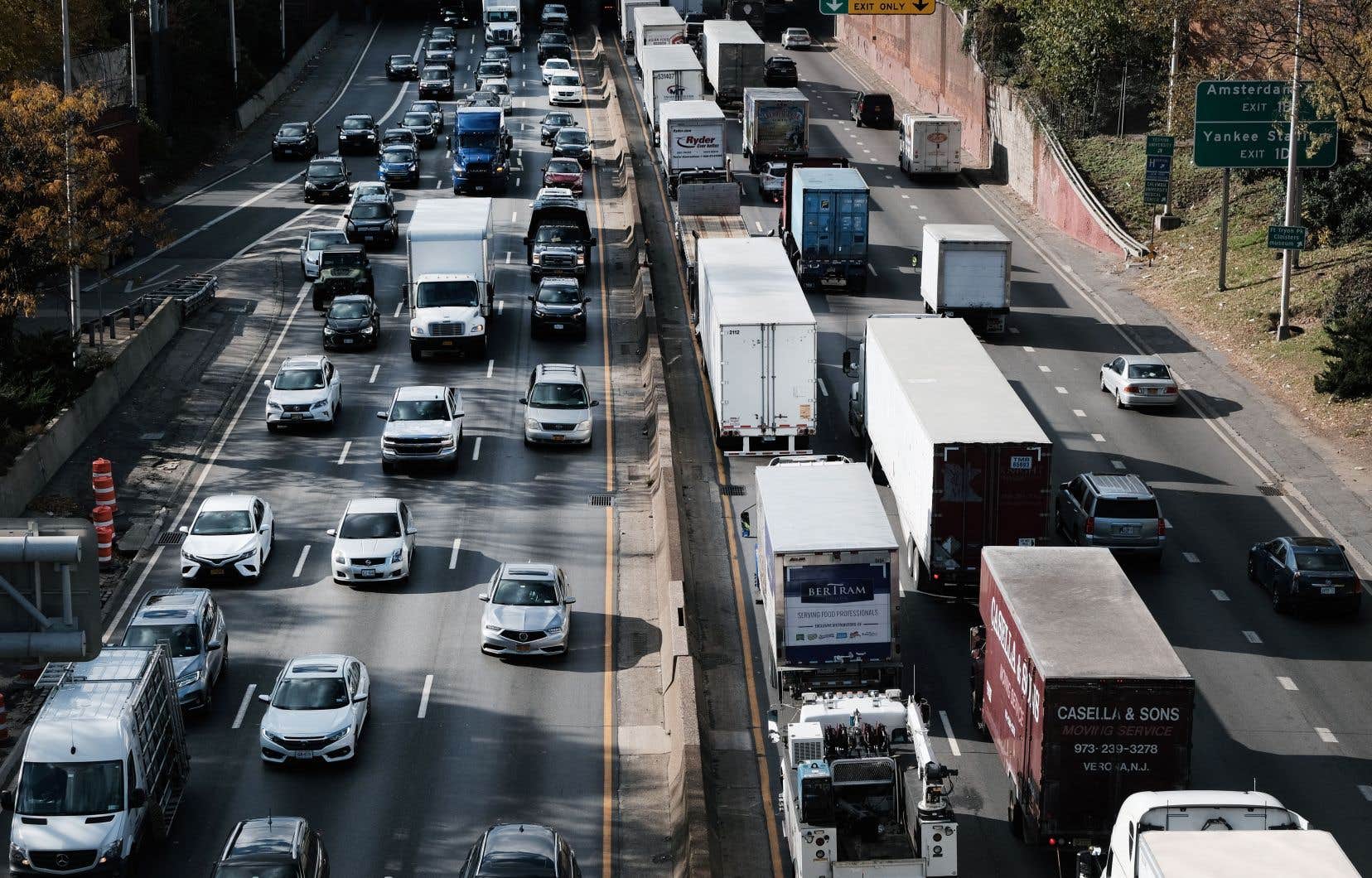Joe Biden’s government continued its offensive on Friday to limit polluting emissions from the road transport sector, with the announcement of new standards this time targeting trucks, after cars last week.
These measures, which aim to encourage the adoption of electric vehicles, should allow residents living particularly near motorways to breathe cleaner air, while contributing to the government’s greenhouse gas emissions reduction objectives. country.
The new standards were welcomed by environmental associations, but strongly criticized by some organizations representing the industry.
Heavy goods vehicles represent around 5% of vehicles on the roads, but 25% of greenhouse gas emissions from the transport sector, which itself is the country’s largest source of emissions.
The new regulations announced on Friday concern heavy goods vehicles (trucks, buses, etc.) built from 2027 until 2032.
These are “the strongest national greenhouse gas emissions standards in history for heavy goods vehicles,” Michael Regan, head of the Protection Agency, said at a press conference. of the environment (EPA).
Concretely, it will be up to manufacturers to choose which technologies they adopt to achieve the set emissions reduction objectives: hybrid, rechargeable hybrid, electric or hydrogen vehicles.
Compared to the proposed standard that had been made, and which has in the meantime been submitted to public consultation as required, the finalized rules give manufacturers more time to deploy these technologies in the first years.
But the “target targeted for after 2030 is completely unattainable given the current state of zero-emission technologies” and “the lack of charging infrastructure”, tackled the American Trucking Associations (ATA) in a press release.
The American Petroleum Institute (API), representing the oil sector, also pointed out “the significant uncertainties regarding the technological and infrastructure capabilities” necessary to comply with these standards. These “could threaten the speed and cost of transporting goods,” the organization added.
“Cleaner air”
The new standards should make it possible to avoid the emission of a billion tonnes of greenhouse gases, according to the EPA.
“Heavy-duty trucks are essential to transporting goods and services across our country,” said Michael Regan. But “they are also significant contributors to pollution from the transport sector, emissions that fuel climate change and degrade air quality. »
According to the EPA, about 72 million people live near freight routes used by trucks in the United States, often people of color or those with low incomes.
The result of these new standards will be “cleaner air and better health,” said Paul Billings of the American Lung Association, which advocates for the prevention of lung diseases.
The EPA previously announced that it had implemented new standards addressing nitrogen oxide (NO) emissions.x) trucks, gases known to cause asthma or respiratory illnesses in particular.
Despite “fierce lobbying from the oil industry and the road sector”, these new standards “will help move things forward to electrify our largest and most polluting vehicles”, welcomed Ben Jealous, of the environmental organization Sierra Club.
Electric trucks remain rare at present.
According to an analysis by the Environmental Defense Fund, around 13,000 have been put on the roads since 2020 in the United States, including 10,000 only last year, a recent and sharp increase, underlines the organization.
But this data must be compared with the total number of trucks, which is around 13 million, according to the American Trucking Associations.
The Biden administration is pushing to accelerate the electrification of vehicles, particularly cars, by also encouraging the development of a network of charging stations.
He has promised the installation of at least 500,000 chargers by the end of the decade, but implementation remains slow. According to the U.S. Department of Energy, there are currently some 180,000 chargers in the country.
